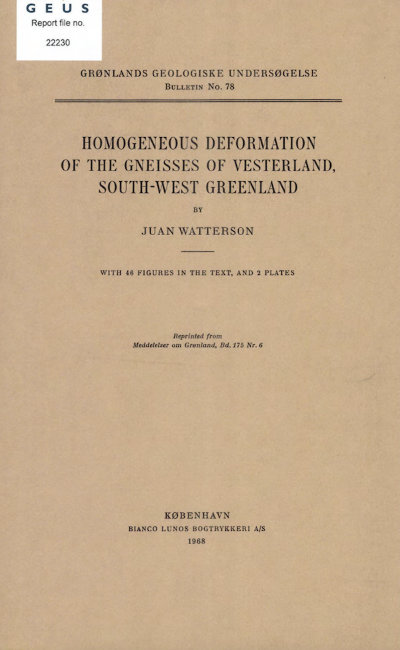Homogeneous deformation of the gneisses of Vesterland, South-West Greenland
DOI:
https://doi.org/10.34194/bullggu.v78.6618Abstract
Structural development of the migmatitic gneisses of the Vesterland area is described first by reference to successive fold episodes (FCF3) and then by reference to the estimated pattern of three-dimensional homogeneous strain. Mylonite zones, up to 2 km in width, are located along attenuated steep limbs of relatively open F3 folds. In acid gneisses F. folds are usually isoclinal, with axial planes and axes parallel to those of F1 folds. In basic gneisses F2 folds are of relatively open style and both axes and axial planes differ from those of F1 folds. The macroscopic penetrative fabric of the gneisses is of the L-S type in which three mutually perpendicular axes can be recognised on a variety of scales, the axes corresponding to the principal axes of the strain ellipsoid. The strain ellipsoid corresponding to deformation in the acid gneisses, as estimated from the disposition of discordant acid veins, is of prolate type, with deformation path (k) approximately 17, and axial ratios 1:3:100. The relationship between homogeneous deformation and varying styles and attitudes of F1 and F2 folds is discussed.
Downloads
Published
Issue
Section
License
This article is distributed under a CC-BY 4.0 licence, permitting free redistribution and reproduction for any purpose, even commercial, provided proper citation of the original work. Author(s) retain copyright over the article contents.


